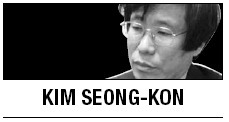When I first came across the film adaptation of Gunter Grass’s “The Tin Drum,” in 1978, I was shocked by the graphic scenes that powerfully but metaphorically indicted Nazi Germany. Several scenes were so shockingly blasphemous and pornographic that the powerful movie has haunted me relentlessly ever since. I immediately bought and read the novel and found it equally provocative.
When I first read Bernhard Schlink’s “The Reader” in 1997, I was deeply moved by the tragic sense of history embedded in the German consciousness. At the same time, I thought that perhaps the Jewish people

would not like the novel or the movie version. The protagonist, Michael, recollects his affair with a 36-year-old woman, Hanna, whom he met and fell in love with when he was 15. Hanna frequently has Michael read aloud to her, particularly classical works such as “The Odyssey.” Michael goes through the ritual of reading aloud, bathing and having sex. One day, Hanna mysteriously vanishes and never returns.
Six years later, Michael becomes a law student and observes a war crimes trial. At the courthouse, he is stunned to encounter Hanna again as one of the defendants. He finds out that she was an SS guard at Auschwitz who was responsible for the massacre of 300 Jewish women. He also finds out that Hanna is illiterate and has desperately tried to hide this fact throughout her entire life. Exposed to her dark past, Michael becomes aghast and feels guilty for loving such a horrible war criminal. At the same time, however, he finds that he is strangely attracted to her and his memory of her seriously hampers his relationships with other women.
In the eyes of the Jews, the novel may seem to give absolution to those who collaborated with the Nazis. In fact, some Jewish critics assert that despite his vehement indictment of Nazi Germany, Schlink seems to try to persuade his reader to understand and even condone Hanna, for she is illiterate and ignorant. In “The Reader,” the older generation desperately wants to hide its illiteracy and ignorance. Ironically, however, they are constantly reminded of their illiteracy and ignorance by having the younger generation read aloud to them.
A Jewish literary critic criticized the novel, saying that in order to be understood and forgiven, “you had to be deaf, dumb and blind, not merely illiterate” because nearly all the German people heard Hitler’s notorious 1939 radio speech, in which he proclaimed that the Jews should be exterminated if war started. An Israeli writer, too, pointed out that “The Reader” is “a product, conscious or not, of a desire to divert (attention) from the culpability of a normally educated population in a nation famed for Kultur.”
Recently, I reread “The Reader” and found it much more thought-provoking than “The Tin Drum.” In 1959, when Grass published the novel, you could condemn the Nazis and their collaborators easily and vehemently. In 1995, when “The Reader” appeared, however, people began to perceive things in much more complex ways under the influence of postmodernism, which enabled them to see things from different angles and perspectives. Besides, since the 1950s, Schlink has vividly witnessed and excruciatingly experienced the tragic conflicts and clashes between the older generation that took part in or witnessed the atrocities and the postwar generation that has struggled to come to terms with the dark past symbolized by the Holocaust and has been left with indelible scars. In that sense, “The Reader” painfully renders the psychic trauma of children who find their parents guilty.
Rereading “The Reader,” therefore, I thought perhaps Schlink’s real intention was not to exonerate the older generation that took part in the atrocities, but to heal the psychic wounds of the two generations through understanding and reconciliation. Perhaps Schlink wants to imply that sometimes the truth is veiled, and the boundary between good and evil is blurry. For example, Hanna took in the weak, sickly women and had them read aloud to her before they were sent to the gas chamber. Michael finds it difficult to know whether Hanna did it because she wanted to make their last days bearable, or because she wanted to make them eternally silent about her illiteracy. Thus Michael confesses his dilemma: “I wanted simultaneously to understand Hanna’s crime and to condemn it. But it was too terrible for that. When I tried to understand it, I had the feeling I was failing to condemn it as it must be condemned. When I condemned it as it must be condemned, there was no room for understanding.”
Rereading “The Reader,” I now realize that we Koreans, too, should try to reconcile the older generation with the younger generation, conservatives with progressives, and the Left with the Right. Indeed, we should try to understand others instead of condemning and denouncing them, and stop the chronic antagonism prevalent in our society. Perhaps that is why “The Reader” has been ardently received by Korean readers for the past two decades.
By Kim Seong-kon
Kim Seong-kon is a professor of English at Seoul National University and president of the Literature Translation Institute of Korea. ― Ed.






![[Herald Interview] 'Trump will use tariffs as first line of defense for American manufacturing'](http://res.heraldm.com/phpwas/restmb_idxmake.php?idx=644&simg=/content/image/2024/11/26/20241126050017_0.jpg)

![[Exclusive] Hyundai Mobis eyes closer ties with BYD](http://res.heraldm.com/phpwas/restmb_idxmake.php?idx=644&simg=/content/image/2024/11/25/20241125050044_0.jpg)